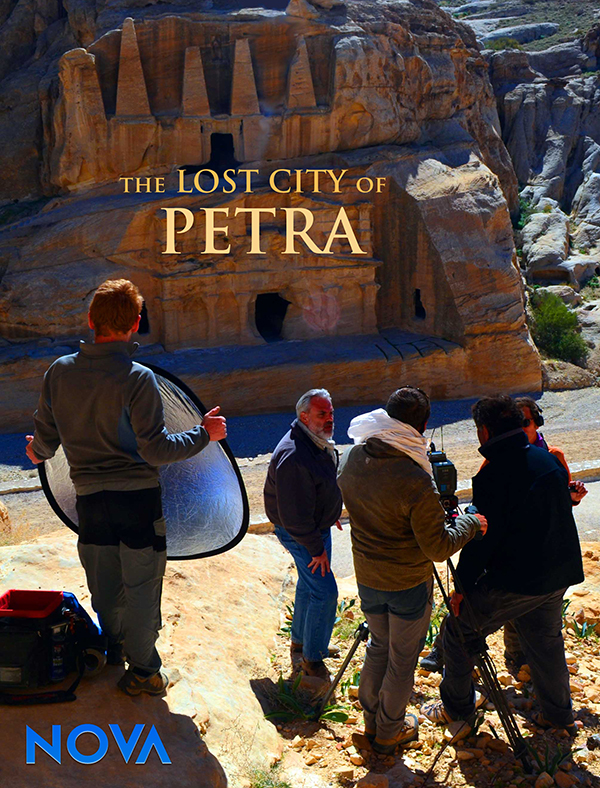Paradise in Petra: U of A Professor Leads Research for PBS Documentary

Tom Paradise (facing camera) consults with film crew in NOVA promotional photo for "The Lost City of Petra"
FAYETTEVILLE, Ark. – A University of Arkansas professor contributed to the replication of a tomb from the ancient city of Petra, something that no one else has seen for 2,000 years.
Thomas Paradise, professor of geosciences in the J. William Fulbright College of Arts and Sciences, was part of a team that worked with carvers and masons to sculpt a full-scale tomb into a cliff face to discover how the ancient Nabateans built Petra. The project was filmed and produced by Providence Pictures as a three-part series for NOVA, a science documentary series on PBS. Petra will be featured along with the Roman Colosseum in Rome, Italy, and Hagia Sophia in Istanbul, Turkey, in Building the Wonders of the World.
Paradise, one of the lead researchers on the project, started as a consultant for the films on the Colosseum and Hagia Sophia before he was asked to contribute to the Petra film. Because Paradise has training in geology, architecture and geomatics, NOVA asked Paradise to oversee the design, re-creation, on-air commentary, script work, imagery and fact-checking, making him part of the project and TV special from beginning to end. Paradise is currently working with animators in recreating the booming crossroads city of Petra for NOVA. Producer and director Gary Glassman said Paradise’s insight into Petra and the Nabateans “provides the soul of the film.”
“We were so amazed about how similar [the tombs] turned out,” Paradise said. “Blacksmiths duplicated the ancient Roman tools used to make Petra. What we learned from this tomb façade recreation has given us new and invaluable insight into the engineering and design expertise of the Nabateans during their Golden Age 2,000 years ago.”
Building the Wonders of the World is set to broadcast in February. It will be shown on PBS in the U.S. and across Europe and Asia on ARTE, a European culture and public service television channel. The series has an estimated viewership of 20 million people worldwide.
“No one has seen this done for 2,000 years,” Paradise said. “The last tombs were probably carved in the second or third century A.D., so no one has witnessed this for at least seventeen- or eighteen-hundred years. It’s amazing.”
Contacts
Tom Paradise, professor of geosciences
J. William Fulbright College of Arts and Sciences
479-575-4359, paradise@uark.edu
Amanda Simmons, communications intern
J. William Fulbright College of Arts and Sciences
479-575-3712, ansimmon@uark.edu